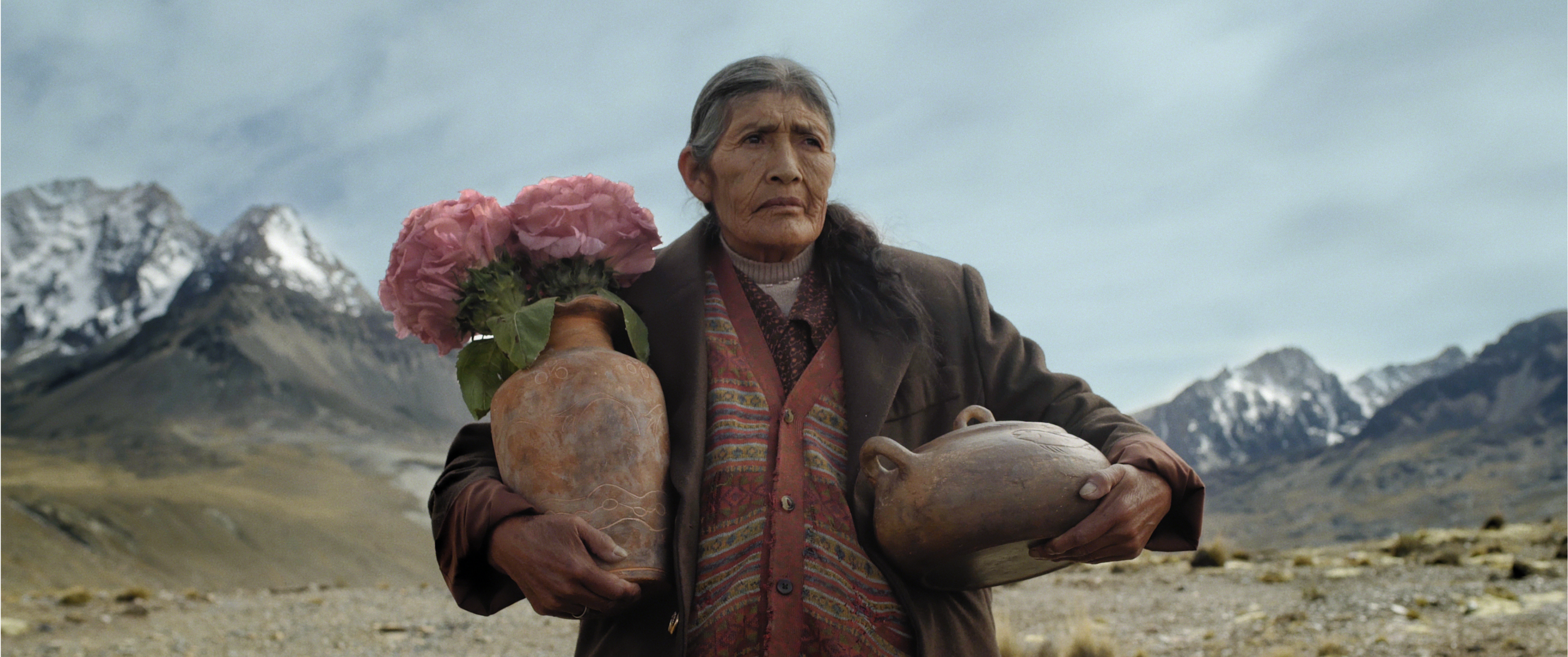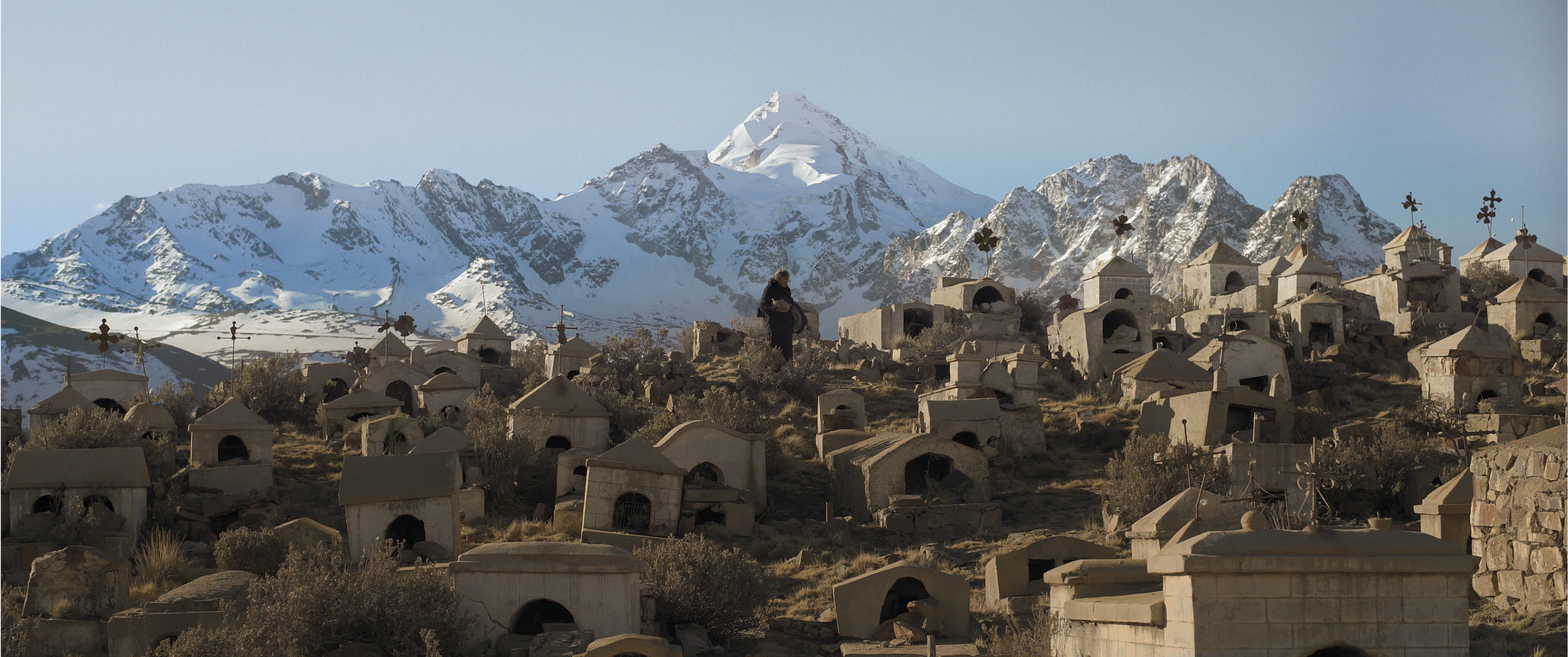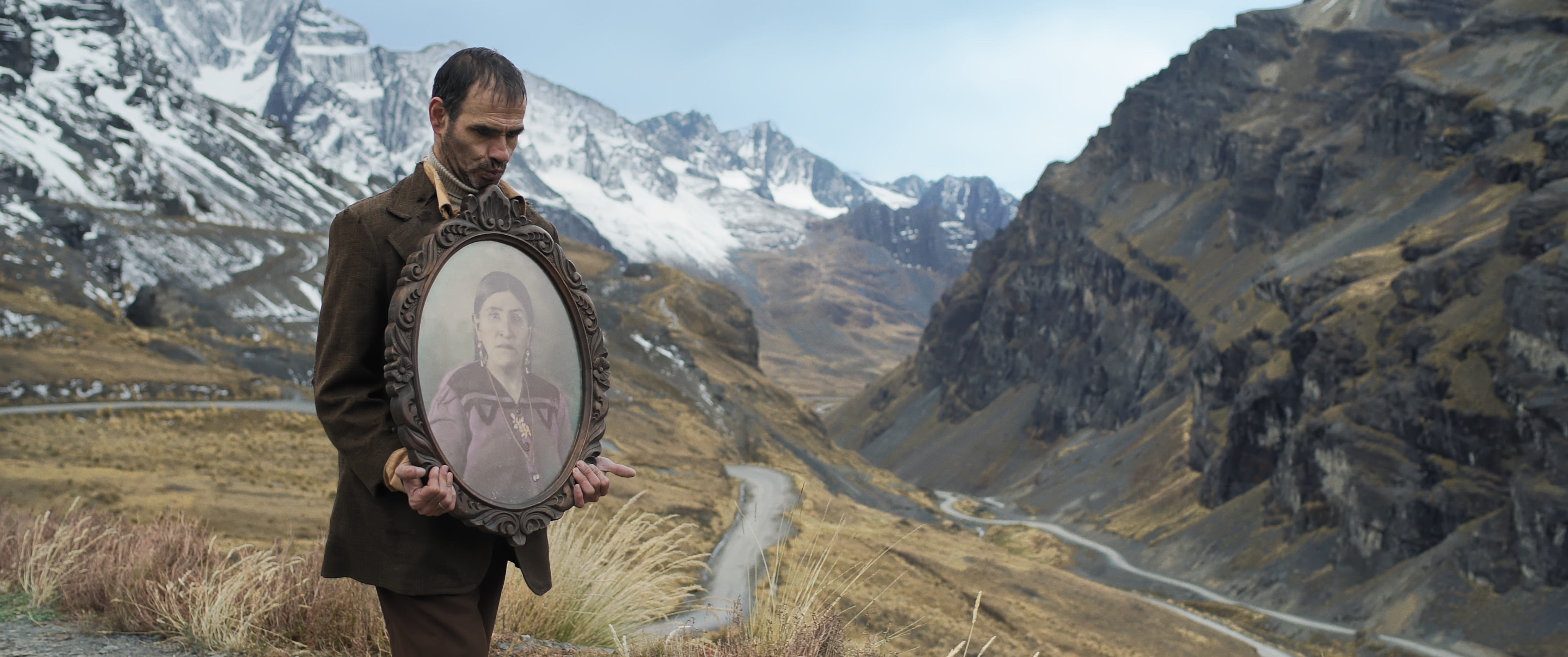Los Nombres de Las Flores (2019)
Director: Bahman Tavoosi (79 minutes)
Genre: Fiction
Language: Spanish
Greenground Productions
Amid the majestic terrain of Bolivia, a poetically sublime film unfolds. The Names of the Flowers / Los Nombres de Las Flores, a feature length fictional portrait of a village with allegorical inferences of diaspora and political fallacy, is filmed in a poignant documentary-genre aesthetic.
Bahman Tavoosi, citing inspiration from neo-realism and employing still-motion theatricality, has authored an investigation surrounding the circumstances prior to the death of the legendary revolutionary martyr, Che Guevara. The arid and harsh scenery sets the background for this ambiguous tale of a rural teacher who met with El Che, providing him with a simple meal of a bowl of soup that inspired the revolutionary to compose a poem, the title piece of the film.
What distinguishes this film from the current spectacular pageantry and excesses of the narrative fiction genre is its serenity, portrayed with exemplary camera direction. Devoid of technical artifice, the characters of the village are revealed, their status and mundane hardships only illustrated by visual sequences, and the audience is drawn into the enchantment of absurdity and realism. The core narrative is interspersed with fragmented images that sustain a visual suspense. The intriguing claims of the anonymous village woman who is said to have received and fed the martyr prior to his assassination keep shifting throughout the film, while figures arrive to enliven the construction of the narration.
There is no clear protagonist. An elderly woman, mother to a mute boy, appears throughout the film. The stark interior of her residence, a spartan adobe home of clay and brick, houses a silent testimony to the extreme poverty of the region. Her child, a social misfit, wanders and is filmed at random, playing in abandoned vehicles or open spaces adjacent to the village. His presence underscores the absurdity of the premise behind the police investigation, as the political echoes of a defunct junta embed in the filmic memory.
The aesthetic and pacing of the film are reminiscent of the works of Antonioni or Kiarostami. The static camera absorbs the poetic stillness of life. The resplendence of the common surfaces is reflected as the rustic interior and majestic landscape are caught, frame by frame, in an underlying visual tension. The attention to light might be akin to that of Vermeer, and a painterly quality is achieved that is consistently present throughout the visual horizons of the camera.
The absence of a child, gifted in music, permeates the shadow of the elderly woman in portrait. The foolish pageantry of state officials, intent on celebrating the death of the martyr, resounds with satirical accolade. The spectre of Che Guevara frames the story, yet Bahman Tavoosi’s masterful oration impels the audience to meditate on the farcical and fragile aspects of the human condition.
The identity of the heroine is never quite affirmed. The ambiguity of the honours to be duly awarded her dooms that to fail. What emerges as an apparently anodyne, benign presence in the lives of the actual villagers is the facile dichotomy of remembrance and the ostensibly salutary efforts of a political vestige of the junta. One is led to wonder about the actual state of affairs in modern-day Bolivia – especially after being further captivated by the film’s incorporation of the native dialect, the authenticity of the non-actors who played the majority of roles, and the textured details of the cinematography.
The visual poetics enact a telling, spatial mnemonic, placing emphasis on the parallelism of image and narration: the art of film. The subtext of detachment and isolation amid the inner plateau of Bolivia, which Tavoosi infers through the visual impact of cinematographic movement, positions the quiet absurdity of the characters who arrive, interspersed with the objectivized role of the police detective who appears to be investigating not crime, but myth.
The manner of storytelling is particularly evasive: the filmic montage (suggestive of Godard’s approach) utilizes non-symbolic imagery to suspend a tale without either a definitive beginning, middle or end. The film might imply influences of magical realism, as sections of the narration appear to be cyclic, while the overall achievement remains one of the sublimation and fusion of the political with the social. The legend of Che awoken, the thread unwinds in a non-linear episodic movement.
The film is essentially visually episodic. With the primacy of the camera and the scenic display, the original quest to ascertain the identity of the “antagonist” who served soup to the legendary figure of transnational South American liberation becomes a pale shadow of itself. The travesty of the officials who arrive to conduct the memorial services and pay homage to the mythic accomplishment of a village that played host to the martyr in his last waking days is clear. The scenes resound with a sense of avarice and subversive humour.
Sporadic interrogations begin placidly, as devoid of menace as possible, led by spectral, vapid figures echoing what can only be a diffuse and impossible power, amid the expansive landscape and stoicism of the village characters. As they endeavour to resurrect and create an idol, the myth dissipates. There appears to be no collective voice of the community, only individuals introduced in the mundane but intimate isolation of a schoolhouse, accompanied by a narration on the futility of veracity in such an unorthodox, non-linear tale.
The Names of the Flowers evokes a powerful imagistic portrait of an era, where nuanced filmmaking and cinematography emerge as the a priori force in the relating of a mythical tale. Evidently, improvisation supersedes a traditional script, with dreamscape and erratum woven in a manner evocative of Bergson.
We are immersed in a distant land, a cultural encapsulation juxtaposed with the ravages of time, the paradox of forensic research and imaginary fabula. What has been crafted with emphatic, contemplative silence is the correlation of the absence of linear time and eternal of image. We are left with the poetic words of Che prior to his death, when – moved at receiving a simple meal – he counted the names of flowers. The film engenders a barren sense of warmth and nostalgia, as it unfolds with subtle irony and speaks of life in a generation gone amiss.
For more information on the film, see Los Nombres de Las Flores (Québec cinema) and The Names of the Flowers (Greenground).
Los Nombres de Las Flores has won the following awards:
2021 Gilles-Carle Prize, Rendez-vous Québec Cinema Award
2020 Best Narrative Feature, Venice Film Week
2019 Jury Award, Tallinn Black Nights International film Festival
2020 Best Narrative Feature, Brussels Independent Film Festival
2020 First prize, Best Feature category, Flickers’ Rhode Island International Film Festival
2020 Audience Award & Jury Award, Aswan International Film Festival
2020 Sao Paulo International Film Festival
2020 Beijing International Film Festival
2020 Haifa International Film Festival
2020 Mill Valley International Film Festival











